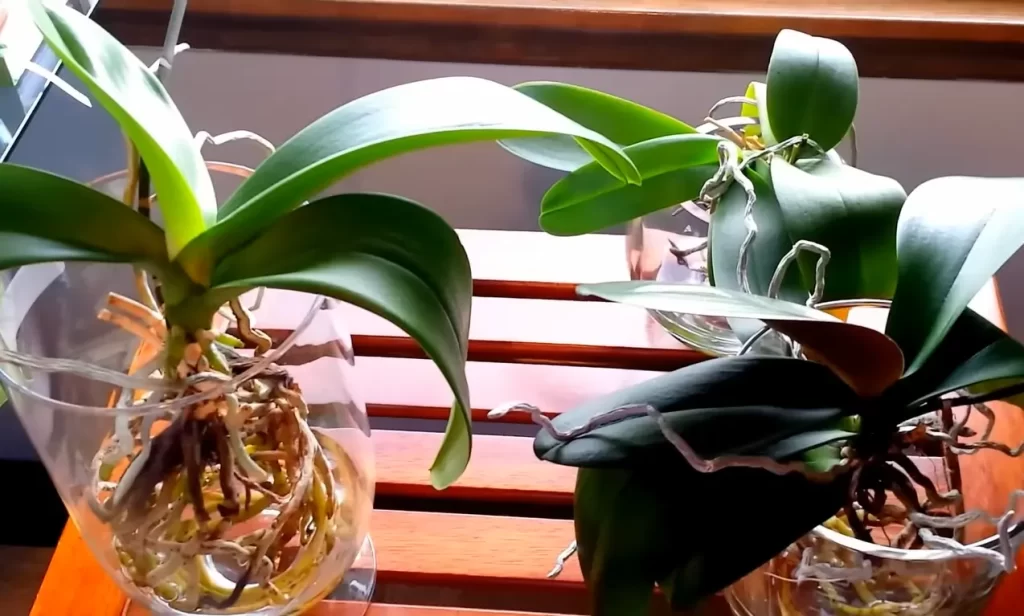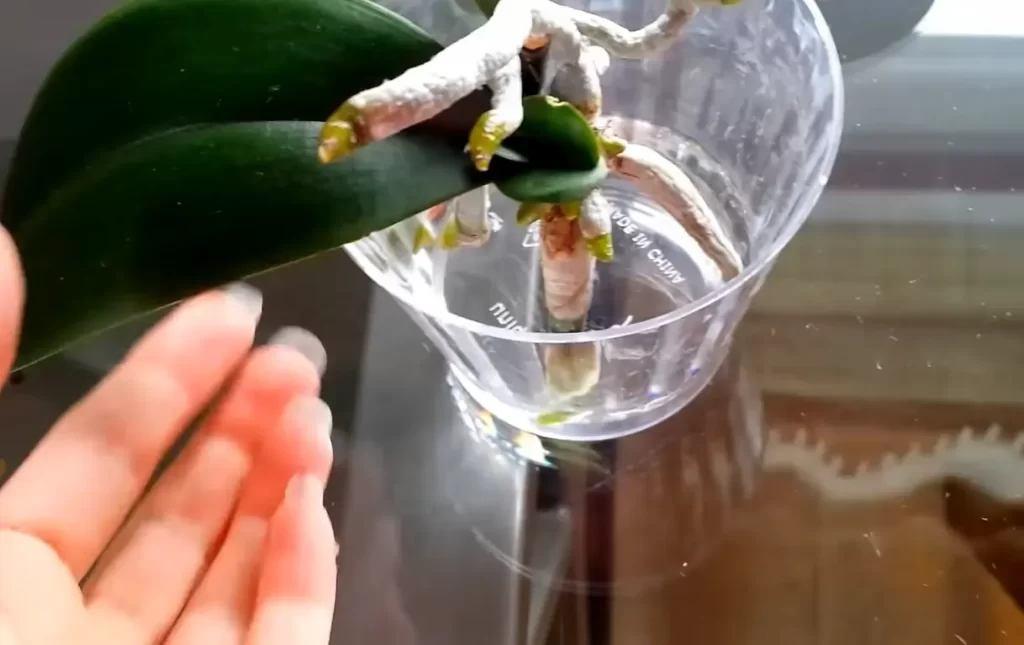Can Orchids Grow Without Soil? Everything You Need To Know
Orchids are known for their stunning beauty and unique features, making them stand out from other plants. These fascinating plants have always been associated with soil, as we see them growing in pots or gardens filled with soil.
However, have you ever wondered if you can orchids grow without soil? The answer is yes! Orchids can grow without soil. These plants can be grown in an inert medium such as bark, moss, or perlite or in hydroponics.
In this blog, we will explore the different mediums in which orchids can grow and how to care for them, providing valuable insights into different types of orchids.
Different Types of Orchids
Orchids are a diverse and beautiful family of flowering plants with more than 25,000 species worldwide. They come in various shapes, sizes, and colors, making them popular for home decor and garden cultivation. Here are some of the different types of orchids you might encounter:

Phalaenopsis Orchids
Also known as “moth orchids,” Phalaenopsis orchids are one of the most popular orchids. These plants have large, showy blooms that come in various colors, from white to pink, yellow, and even purple. They are relatively easy to care for and are commonly grown indoors.
Cattleya Orchids
Cattleya orchids are known for their large, vibrant flowers and are often used in corsages and other formal arrangements. They come in various colors, including white, pink, purple, and yellow, and require bright, indirect light to thrive.
Dendrobium Orchids
Dendrobium orchids are native to tropical and subtropical regions and are known for their delicate, long-lasting blooms. These orchids come in various colors, including white, pink, purple, and yellow, and are commonly grown as houseplants.
Oncidium Orchids
Oncidium orchids, also known as “dancing lady” orchids, are epiphyte types that grow on trees in their natural habitat. They have small, brightly colored flowers that grow in clusters and are popular among collectors for their unique appearance.
Vanda Orchids
Vanda orchids are epiphyte types that grow in tropical regions and are known for their large, colorful blooms. These orchids come in various colors, from blue and purple to pink and orange, and require bright, indirect light to thrive.
Miltonia Orchids
Miltonia orchids, also known as “pansy orchids,” have large, flat flowers that resemble pansies. They come in various colors, including white, pink, purple, and yellow, and require high humidity and bright, indirect light to thrive.
Can Orchids Grow Without Soil?
Yes, orchids can grow without soil as they are epiphytic plants that naturally grow on trees and rocks in the wild. Instead of soil, they use their aerial roots to attach themselves to a medium such as bark, coconut fiber, or moss.
These mediums help retain moisture and provide stability for the plant. Orchids grown in this manner require high humidity, frequent misting, and regular fertilization with a balanced fertilizer. T
hey also need indirect sunlight and a temperature range of 60-80 °F. Orchids can be grown without soil in a container or vase, and wide orchid varieties are suitable for this type of cultivation. With proper care and the environment, orchids can thrive without soil.
Different Mediums for Growing Orchids Without Soil
With the right care and environment, orchids can thrive in different mediums and containers. Here are some different mediums and techniques you can use to grow orchids without soil.
1. Aerial Roots and Bark
Orchids are known for their aerial roots that can absorb environmental moisture and nutrients. One way to grow orchids is by attaching them to a piece of bark, which can serve as a natural medium. Depending on the orchid variety, you can use different types of bark, such as fir bark, oak bark, or a mixture of bark chips.
2. Coconut Fiber and Husks
Coconut fiber and husks are another popular medium for growing orchids. They are sustainable and provide good drainage while retaining moisture. You can use coconut fiber or husk chips as a standalone medium or mix them with other mediums like perlite or charcoal.
3. Water and Air
Some orchids, such as air plants, can grow without any medium. They absorb moisture and nutrients directly from the air. You can also grow orchids in water, which is known as hydroponics. However, it requires more care and monitoring of water temperature and nutrient levels.
4. Containers and Vases
You can grow orchids in various containers, from traditional pots to glass vases or terrariums. The container should have good drainage to prevent water from accumulating and causing root rot. You can also use specialized orchid containers with slits for the roots to grow.
5. Fertilizer and Moisture
Growing orchids without soil requires careful attention to fertilizer and moisture levels. Orchids need high-phosphorus liquid fertilizers, and you should apply them sparingly. They also require a continuous moisture supply, but excess moisture can cause root rot.
6. Environment and Light
Orchids are tropical plants and require a warm and humid environment to thrive. The ideal temperature range is between 65 and 85 degrees Fahrenheit. They also require bright, indirect sunlight, which can be achieved by placing them near windows or using artificial lights.
How Orchids Get Nutrients Without Soil
Orchids can obtain nutrients without soil through their aerial roots, which absorb moisture and nutrients from the environment. They can also be grown in mediums such as coconut fiber or bark chips, which provide support and moisture.
Fertilizer can be applied to the medium or water the orchid is growing. Orchids thrive in tropical environments with indirect sunlight and a consistent temperature.
Different orchid varieties have specific care requirements, so research the specific needs of your orchid. Orchids can be grown in containers or vases and placed near windows or in bright light areas to ensure proper growth.
If you want to repot your orchid plant, you should know how to repot an orchid properly. Otherwise, it will be difficult for your to revive your plant.
Can An Orchid Grow In Just Water?
Some orchid varieties can grow in water without any soil or growing medium. These orchids are “air plants” or epiphytic plants, which naturally grow on other plants, trees, or bark in their native tropical environments.

These orchids have adapted to absorb moisture and nutrients from the air, rain, and dew, and their roots are mainly used to anchor them to their host plant. To grow an orchid in just water, you can place the roots of the orchid in a vase or container filled with water. Place it in a bright, indirect sunlight environment with consistent temperatures.
However, these orchids still require proper care and fertilization to thrive. Some growers also use coconut husks or fiber as a growing medium for orchids.
Can You Grow An Orchid With No Roots?
It is possible to grow an orchid with no roots using a piece of bark or an air plant medium. Epiphytic orchids, such as tropical orchids, can thrive without soil and absorb nutrients and moisture from the air through their aerial roots.
To grow an orchid without roots, you can attach it to a piece of bark or an air plant medium and provide indirect sunlight and proper moisture.
However, you’ll need to fertilize the orchid regularly with a high-phosphorus liquid fertilizer and maintain a suitable environment with the right temperature and humidity. With proper care, orchids without roots can still produce beautiful flowers.
Final Thoughts
The discussion above highlights that can orchids grow without soil. Epiphytic orchids, particularly tropical orchids, thrive without soil and can absorb nutrients and moisture through their aerial roots.
Using a piece of bark or an air plant medium, orchids without roots can still produce beautiful flowers with proper care, fertilization, and suitable environmental conditions.
Therefore, if you’re interested in growing orchids, it’s worth exploring the variety of orchid types and mediums available to find the best fit for your preferences and growing conditions. Ultimately, with the right care and attention, it is possible to grow an orchid without soil.
